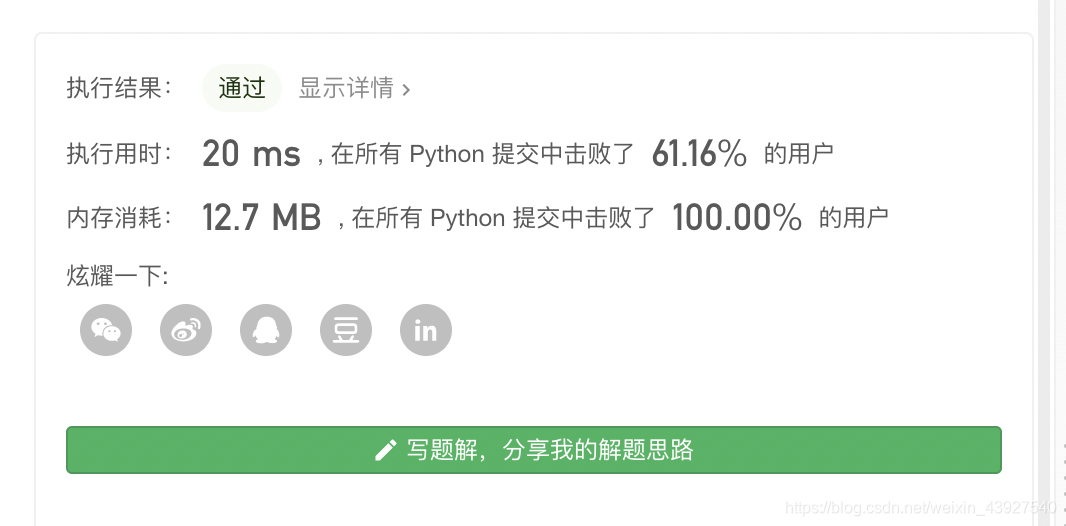题目
使用栈实现队列的下列操作:
push(x) – 将一个元素放入队列的尾部。
pop() – 从队列首部移除元素。
peek() – 返回队列首部的元素。
empty() – 返回队列是否为空。
示例:
MyQueue queue = new MyQueue();
queue.push(1);
queue.push(2);
queue.peek(); // 返回 1
queue.pop(); // 返回 1
queue.empty(); // 返回 false
说明:
你只能使用标准的栈操作 – 也就是只有 push to top, peek/pop from top, size, 和 is empty 操作是合法的。
你所使用的语言也许不支持栈。你可以使用 list 或者 deque(双端队列)来模拟一个栈,只要是标准的栈操作即可。
假设所有操作都是有效的 (例如,一个空的队列不会调用 pop 或者 peek 操作)。
解法
使用两个栈即可解决
代码如下:
class MyQueue(object):
def __init__(self):
"""
Initialize your data structure here.
"""
self.stack = []
self.stack_tmp = []
def push(self, x):
"""
Push element x to the back of queue.
:type x: int
:rtype: None
"""
self.stack.append(x)
def pop(self):
"""
Removes the element from in front of queue and returns that element.
:rtype: int
"""
if self.stack:
while self.stack:
self.stack_tmp.append(self.stack.pop())
result = self.stack_tmp.pop()
while self.stack_tmp:
self.stack.append(self.stack_tmp.pop())
return result
else:
return False
def peek(self):
"""
Get the front element.
:rtype: int
"""
if self.stack:
while self.stack:
self.stack_tmp.append(self.stack.pop())
result = self.stack_tmp[-1]
while self.stack_tmp:
self.stack.append(self.stack_tmp.pop())
return result
else:
return False
def empty(self):
"""
Returns whether the queue is empty.
:rtype: bool
"""
return not self.stack
# Your MyQueue object will be instantiated and called as such:
# obj = MyQueue()
# obj.push(x)
# param_2 = obj.pop()
# param_3 = obj.peek()
# param_4 = obj.empty()
奥利给!






 本文介绍了一种使用两个栈来实现队列数据结构的方法。通过这种方式,可以有效地完成队列的基本操作,包括push、pop、peek和empty。文章提供了详细的Python代码实现。
本文介绍了一种使用两个栈来实现队列数据结构的方法。通过这种方式,可以有效地完成队列的基本操作,包括push、pop、peek和empty。文章提供了详细的Python代码实现。
















 327
327

 被折叠的 条评论
为什么被折叠?
被折叠的 条评论
为什么被折叠?








